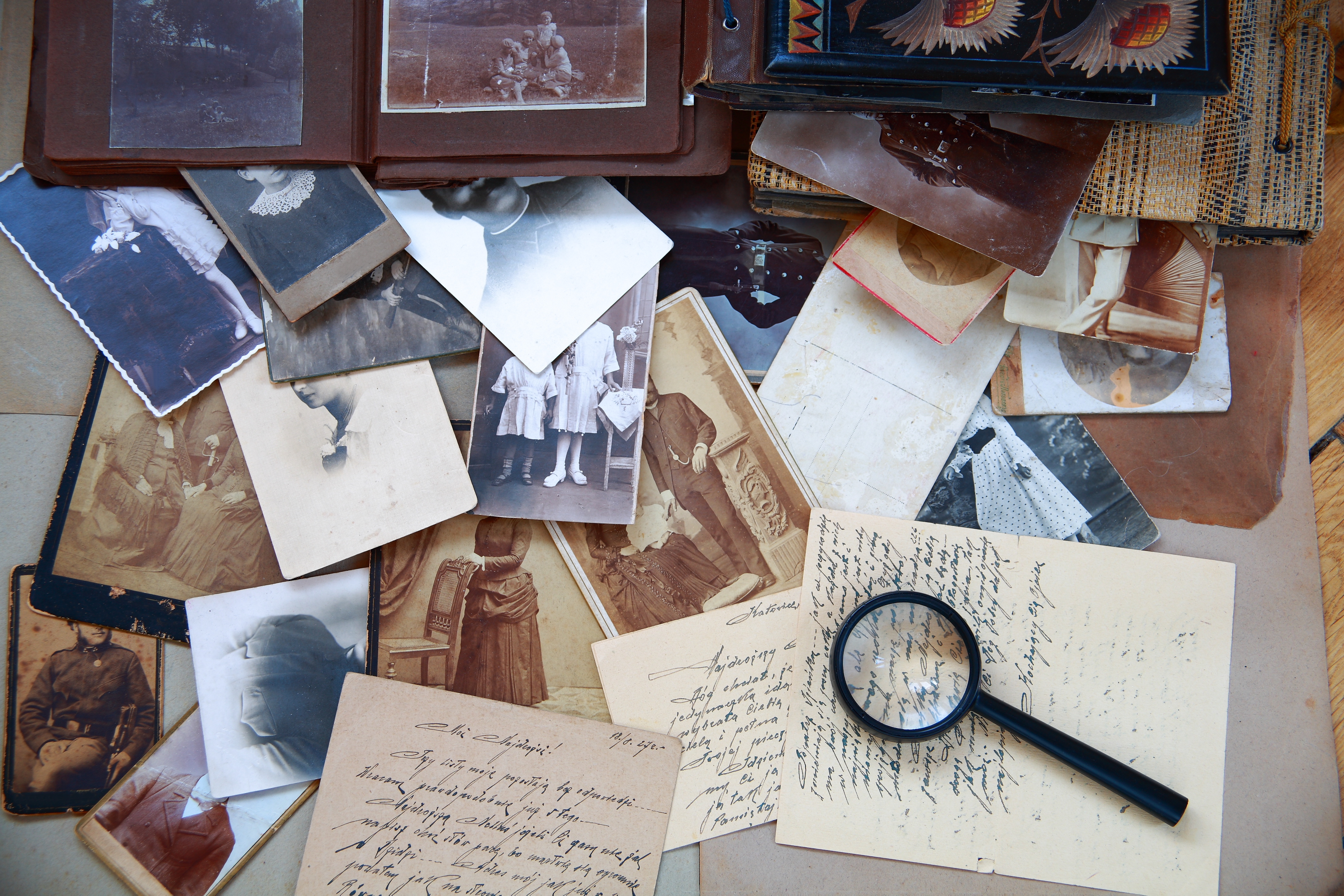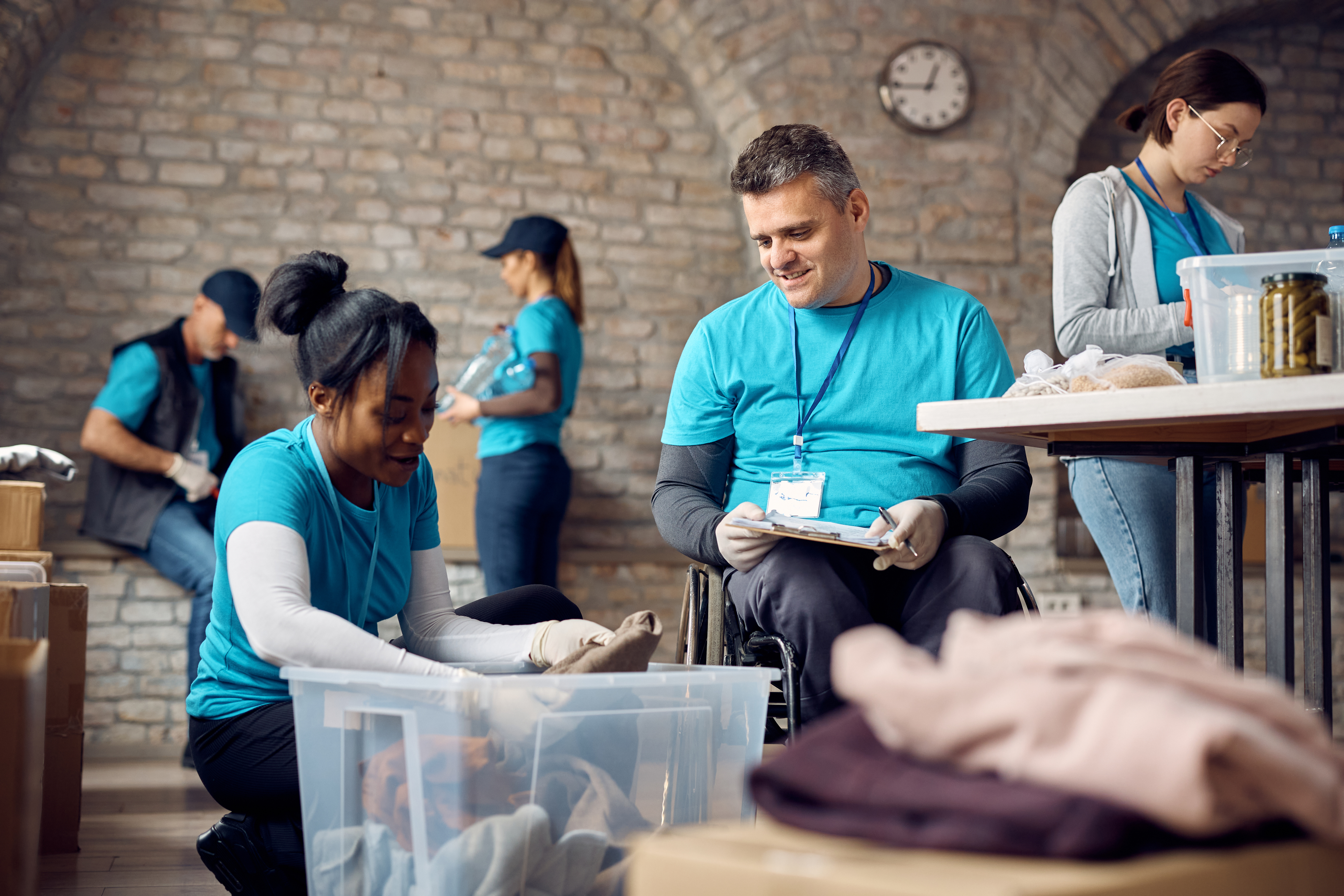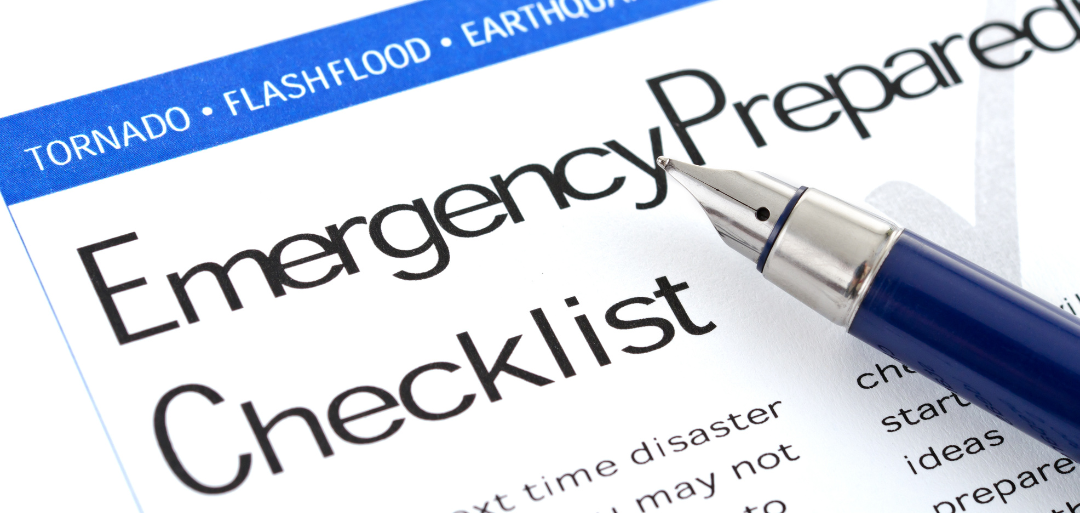Article | Artifact/Collections Response
Article | Artifact/Collections Response

INTRODUCTION
Disaster- whether burst pipe, flood, fire, tornado or other weather related disaster can strike quickly, often with devastating effects to communities. Thankfully, there are steps that can be taken both before and after a disaster to preserve the books, letters, scrapbooks, photographs, artifacts and artwork that document a community’s culture, history and identity.
These cultural heritage collections are significant due to their uniqueness, rarity and value to communities and they are often especially vulnerable to damage due to their material composition (paper, ink, wood, film, fiber, etc.). Because of this, individuals and community organizations that steward cultural heritage may need additional planning and recovery resources to navigate the basics of disaster preparedness and response for these items.
PREPAREDNESS FOR ARTIFACTS
"Prevention is the best medicine"
As the saying goes, preparation before trouble begins will always be more effective than repairing things afterwards. Although it may be difficult to dedicate time and resources to an issue that hasn’t presented itself yet, taking a few simple steps now will help ensure the safety and security of your community treasures in the future.
The first thing you can do is collect and keep a kit1 of disaster response items on hand in a bin or closet. Be sure to label all items with “disaster bin” or “disaster closet.”
DISASTER KIT
- Fans (a box fan for drying books and carpet, and an oscillating fan r air circulation)
- Heavy-duty extension cord, with multiple plugs (for fans)
- Folded stacks of paper towels (to use for interleaving)
- Plastic crates for drying (allows for air flow)
- Butcher paper (to wrap items for freezing)
- String or twine and clothespins (to make clotheslines)
- Rolled plastic, as well as pre-cut and boxed plastic
- Static-free wiping cloths
- Dehumidifier and Desiccant
- Gloves (nitrile), masks, goggles
- Paper, pencils, pencil sharpeners, clipboards, markers and scissors
- Printed copy of disaster planning documents
Plan for Preservation
As part of your emergency response planning, you will want to identify space, salvage strategies and services, and equipment that will assist in your recovery efforts.
A good plan will also designate decision-making roles and responsibilities: Who makes prioritizing decisions of what to keep and what to discard?; Who coordinates?; Who is available to help?; Who manages volunteers?
If your organization is charged with the housing of significant items, you will also need to consider creating a business continuity and recovery plan to ensure their continued protection after a disaster.
Once this information is gathered, copies should be kept in a variety of locations and reviewed and updated regularly.
IDENTIFY IN ADVANCE
- Space and tables for handling and drying wet items
- Generators, air conditioning units, and heaters
- Dumpster service
- Space for temporary storage of recovered items, including frost-free freezer space
- Salvage priorities (what will you deal with first, second, third, etc.)
- Items (or categories of items) that could be discarded if it will cost too much to recover them
- Roles and responsibilities
Storing for Safety
To minimize damage to cultural collections during a disaster, you must store them in a way that is secure and resistant to damage.
This will require a basic inventory and organization of your collection so that in the case of disaster, items of importance2 can be identified quickly, covered/protected, or moved to a secure, off-site location.
Each collection room will present its own damage prevention challenges. When storing artifacts, work with the space you have, to avoid over-crowding, and keep items away from windows and off the floor.
INVENTORY AND STORAGE
- What do you have and where is it located (building, room, shelf/ cabinet coordinates)? What level of salvage priority is it?
- Keep copies of the inventory and other electronic records in a variety of locations, such as external hard drives stored in different buildings and in cloud storage. Keep usernames and passwords updated and stored where they are accessible.
- Label, number and store your items off the floor and away from windows. Items used during work hours should be returned to the proper storage area each night.
- Review any existing or potential building problems such as leaking windows or pipes, and ensure that smoke alarms and fire extinguishers are tested and operational.
- Paper, framed items and photographs housed in plastic sleeves or 3-ring binders are easily destroyed in a water or flood disaster and are particularly difficult to salvage. It is best to display copies when possible and store originals away from dust and light.
- Store vital or high priority items together for easy removal.
INITIAL DISASTER RESPONSE
Personal Safety and Communication
When a disaster strikes, personal safety is of primary concern. You should follow all protocols your organization has enacted in its Disaster Preparedness Plan before taking measures to salvage objects. These plans include communication and evacuation strategies3 for ensuring that all individuals are kept safe in those initial moments of uncertainty.
It is possible that some time will pass before an area is deemed safe to enter again. If phone and internet remains available, this is time that can be spent communicating and organizing a targeted response. Only after imminent danger has passed should work begin to retrieve cultural items of special importance and only then while wearing appropriate protective equipment.
PERSONAL SAFETY AND COMMUNICATION
• Ensure the area is safe to enter.
• Begin locating and communicating with employees and volunteers.
• Contact insurance providers, outside resource contacts from disaster plan, and conservators.
• Personal Protective Equipment (PPE) such as gloves, masks and goggles should be worn during any disaster response activities.
• Do not carry heavy items without help and don’t rush, to avoid injury or additional damage.
• Take breaks and remember to eat and drink to stay energized.
• Tend to the mental health needs4 of yourself and those around you by encouraging self-care and referring to professional resources in extreme situations.
• Celebrate the work and accomplishments of employees and volunteers along the way!
Stabilize for Safe Keeping
In the initial phase of artifact and document recovery5, you will need to triage, then stabilize affected items to prevent additional damage. Begin by locating and setting up sheltered work areas, generators, air conditioning, freezers, fans, dehumidifiers and/or heating as needed.
Your disaster response work area should be set up with plastic, clotheslines, tables and butcher paper (from your disaster kit, if you had one prepared). Paper, pencils or other tools will be needed to label each item. You will want to document the process with photographs and descriptive notes.
You will need to work quickly to organize your response. Organic materials like paper, fiber and wood are usually most vulnerable, followed by metals that can rust, ceramics that are porous and finally stone. But other factors such as rarity, importance and value should also be considered.
Throughout the salvage and recovery process, you will need to determine if items should be kept (weighing their value with the resources required to recover them). Unfortunately, not all items can be saved. However, you can freeze some items to prevent mold, buy precious time, and to slowly draw moisture out of the material. You will need to document any losses or damage to items.
After the recovery response, the items that will be kept should be stored in cool and stable temperatures. If permanent storage is not yet available, you will need to utilize short-term storage.
Items of high historical and cultural value that are damaged can be stabilized first (dried, frozen, rinsed, and/or vacuumed, and stored) and then referred to a conservator for further review and action.
Water Damage
Most people associate water damage with weather-related disasters like hurricanes, tornados and flooding. However, fire can also cause water damage from sprinklers/ fire hoses and render buildings vulnerable to weather. Human-perpetuated water damage can also occur, such as leaky windows and various plumbing issues. Recovery for water affected artifacts6 will vary based on their material composition.
Some effects of water damage are not immediately visible, but will appear in the days after the exposure. Disrupted HVAC and power systems caused by disasters will worsen these issues by preventing proper air flow and cooling in humid and warm conditions. Gas-powered generators can be useful for powering fans, air conditioners and de-humidifiers9 in the first 24-48 hours after a disaster to prevent and slow mold growth until utilities are restored.
WATER DAMAGE RESPONSE
For Audiovisual Formats
- Rinse video and audiocassette tapes in distilled water, then air dry.
For Paper7 , Photos and Textiles
- Small amounts of slightly to moderately wet items can be air dried. Work with only the amount of items you have capacity to process at any given time.
- Air-dry by unfolding, removing from housing/frames, fanning out, hanging and/or interleaving wet items with paper towels to dry.
- Large amounts of moderately to very wet items will need to be frozen, especially if weather is humid, warm or hot.
- Freeze items by wrapping small groups of items in butcher paper, tie with string, label and put in freezer.
For Wood
- Remove wooden items from water as quickly as possible and store where humidity can be monitored and slowly decreased to prevent stress, warping and splitting8.
- Blot away moisture and dirt to reduce scratching to finishes.
- If water dissolves wood glue, collect loose pieces, label and once dry, store with the object.
- Quickly remove any iron hardware from wood before it rusts and stains wood.
For Metal
- Water can cause rust and/or tarnish to develop on some metals.
- Remove metal items from water and/or humidity. Quickly dry and place items in sealed containers with desiccants to draw out remaining moisture. Contact a conservator for rust removal and application of oil if needed.
ONCE DRIED
- Dirty items should be dusted, vacuumed or wiped.
- All items should be rehoused and relabeled, then stored in temporary storage until the permanent storage area is available.
- Do not force apart stuck-together photographs or pages of photograph albums.
- Store dried items that were cleaned of mold separately from other dried items that were not moldy.
MOLD DAMAGE RESPONSE10
- Mold will grow within 48 hours when humidity is above 70%. Rapid response is necessary.
- If mold is present on the object, according to the amount of damage and other considerations you will either:
- Dispose of the item(s),
- Keep, by wrapping and freezing for later mold abatement,
- Or (wearing PPE), dry in open air, then wipe with static-free cloths or vacuum on lowest setting with hepa filters.
- Mold quickly multiplies and will spread to nearby items and boxes.
- After drying, store separately from other dried items that were not moldy to prevent spread.
- Mold growth slows below 70 degrees Fahrenheit, so cool storage is preferred.
- Mold can be wiped from hard surfaces like wood, metal or ceramic, but can cause substantial damage to porous materials like paper and fiber.
Fire/Soot Damage11
Organic materials are at most risk of fire damage and may burn partially or completely during a fire. But those items aren’t the only ones at risk.
Although controlled heat is used in the creation of metalwork, ceramics and glass, rapid and intense heat from flames can cause significant damage to these items by shattering glass and ceramics, creating cracks in ceramic glazes, weakening or melting glues and metal solders, and causing some metals to warp, weaken, and become brittle.
The smoke and soot a fire leaves behind can also corrode metals or can settle and become absorbed into any porous surface. Soot also becomes harder to remove over time. For all these reasons, objects affected by fire must be treated very carefully.
SOOT DAMAGE RESPONSE
- Soot-damaged items are very fragile.
- Minimize touching and always wear nitrile or latex gloves.
- Dry any wet items.
- Do not clean items with water or soap.
- Put items into supportive boxes or plastic containers or place clean boards, plastic, or sheets underneath them.
- Vacuum dry items on the lowest vacuum setting (preferably with a HEPA filter). Vacuum outside surfaces before unfolding or opening items.
- Use soot sponges (dry cleaning sponges) to spot-clean.
- Contact a conservator.
LONG-TERM DISASTER RESPONSE
Continuation of Care
Disaster recovery can take weeks, months, or even years and is often described as a marathon, not a sprint.12 You will not be able to do everything all at once. Some items will need to be dealt with later. And other interventions will only be able to be implemented after the initial response has been completed. Continuing to monitor, treat, review and plan will be necessary.
One silver lining storms can bring is that the importance of disaster planning becomes concretely evident and future vulnerabilities can be easily identified. That clarity and momentum can be used to return to the planning process to ensure your collection is better protected for the next disaster.
LONG-TERM RESPONSE
- Recover frozen items by unfreezing bundle by bundle, then following air drying procedures.
- Digitize selected items and discard the originals, if necessary. Document this decision process.
- Regularly and periodically check on any affected or damaged items and provide care as needed.
- Fundraise15 for the renovation, repair or establishment of new permanent storage.
- Consider working with another cultural heritage org or community partner to preserve your items.
- Transfer items from short-term to long-term or permanent storage.
- Review and continue to repair building problems.
- Update inventory, item labeling and numbering, and location coordinates for items.
- Continue to re-house items in archival materials.
- Review and update salvage priority list.
- Review and update disaster response roles.
- Engage with your community and build relationships for lasting change.16
Community Networks
Arts and Cultural Institutions are poised to assist their communities in the recovery process by engaging directly with residents through programming, events, and by promoting community dialogue through exhibits and publications.13 These community relationships and networks become integral to organizations in distress14 by creating a pool of volunteers and donors and broadening available resources.17 Relationships aren’t created overnight and must be nurtured over time. You can ensure the longevity of your organization beyond any disaster through targeted community development work and capacity-building and by making sure that you are also engaged in other community and regional response efforts.
RESPONDERS/HOTLINE:
National Heritage Responders (part of American Institute for Conservation (AIC))
Emergency Help Line for organizations/institutions: 1-202-661-8068
Emergency Help Line for individuals: NHRpublichelpline@culturalheritage.org
https://www.culturalheritage.org/resources/emergencies/national-heritage-responders
Northeast Document Conservation Center (NEDCC)
24/7 Collections Emergency Hotline: 1-855-245-8303
https://www.nedcc.org/free-resources/disaster-assistance/
Kentucky Heritage Emergency Response Network:
ky.heritage.emergency.help@gmail.com
UK College of Fine Arts/ Emergency Arts Management Resources for Disaster Relief
https://finearts.uky.edu/arts-administration/resources-disaster-relief
Heritage Emergency National Task Force (HENTF) (co-sponsored by FEMA and the Smithsonian)
https://culturalrescue.si.edu/hentf/about-hentf/
National Coalition for Arts Preparedness and Response (NCAPER)
Performing Arts Readiness
Hotline: 1-800-999-8558 x 2911
https://performingartsreadiness.org
If you or a loved one is experiencing emotional distress after a disaster, you are not alone.
PLEASE REACH OUT FOR HELP:
Substance Abuse and Mental Health Services Administration (SAMHSA) Disaster Distress Hotline
24/7, 365-day-a-year crisis counseling and support line: 1-800-985-5990
https://www.samhsa.gov/find-help/disaster-distress-helpline
RECOVERY PREPAREDNESS/RESPONSE RESOURCES:
dPlan and ArtsReady Disaster Planning Subscription Service
Heritage Emergency National Task Force (HENTF) (co-sponsored by FEMA and the Smithsonian) Resources for the Public and Historic Property Owners:
https://culturalrescue.si.edu/hentf/resources/resources-public-and-historic-property-owners/
National Parks Service Conservo-Grams section 21,
“Disaster Response and Recovery”
https://www.nps.gov/museum/publications/conserveogram/cons_toc.html#collectionpreservation
Northeast Document Conservation Center (NEDCC)
Disaster recovery resources: https://www.nedcc.org/free-resources/disaster-assistance/
Preservation leaflets: https://www.nedcc.org/free-resources/preservation-leaflets/overview
Performing Arts Readiness
https://performingartsreadiness.org/sample-emergency-plans/
Save Your Family Treasures | FEMA.gov
https://www.fema.gov/disaster/recover/save-family-treasures
Two-page fact sheet: Salvaging Water-Damaged Family Valuables and Treasures
Society of American Archivists Disaster Planning and Prevention Resources
https://www2.archivists.org/initiatives/mayday-saving-our-archives/annotated-resources
REFERENCES
- Ryan, Meghan. “Supplies and Tools for Library Disaster Response” January 24, 2017. Consortium of Academic and Research Libraries in Illinois. Accessed November 2022. https://www.carli.illinois.edu/products-services/collections-management/supplies-tools
- Duhl, Susan. Webinar. “After Disasters: Salvage and Recovery in Small to Mid-Sized Museums and Libraries” Foundation for Advancement in Conservation (FAIC) Accessed September 10, 2022. https://connectingtocollections.org/after-disasters/
- “Smithsonian Institution Staff Disaster Preparedness Procedures” Smithsonian Institution, Office of Risk Management, revised October 1993. https://www.archives.gov/preservation/emergency-prep/disaster-prep-procedures.html
- “Recovering Emotionally After a Disaster” American Red Cross. Accessed October 3, 2022. https://www.redcross.org/get-help/disaster-relief-and-recovery-services/recovering-emotionally.html
- FEMA, “After the... [disaster] Fact Sheets: Advice For Salvaging Damaged Family Treasures”, “Save Your Family Treasures Fact Sheets”, https://www.fema.gov/disaster/recover/save-family-treasures
- Northeast Document Conservation Center (NEDCC) “Preservation Leaflets: 3. Emergency Management; 3.6 Emergency Salvange of Wet Books and Records, 3.8 Emergency Salvage of Moldy Books and Paper, 3.12 Freezing and Drying Wet Books and Records” https://www.nedcc.org/free-resources/preservation-leaflets/overview
- Podany, Jerry. “Objects Recovery, Mitigation.” National Archives. Accessed September 12, 2022. https://www.archives.gov/preservation/conservation/objects-recovery.html
- Conserve O Gram: “Salvage At A Glance, Part I: Paper Based Collections” Number 21/4. January 2002. Accessed October 2022. https://www.nps.gov/museum/publications/conserveogram/21-04.pdf
- "Primer on Disaster Preparedness, Management & Response: Primary Considerations for Recovery of Water-Damaged Collections” National Parks Service. October 1993. https://www.nps.gov/museum/publications/primer/prim30.html
- Price, Lois Olcott. “Managing a Mold Infestation: Guidelines for Disaster Response”, Revised 2019. Conservation Center for Art & Historic Artifacts. Accessed September 30, 2022. https://ccaha.org/sites/default/files/attachments/2019-09/Mold%20Technical%20Bulletin%202019_GM.pdf
- Duhl, Susan. “Disaster recovery: Fire and soot damage” True Vue. https://tru-vue.com/2014/11/disaster-recovery-fire-and-soot-damage/
- “National Disaster Recovery Framework: Strengthening Disaster Recovery for the Nation” Federal Emergency Management Agency (FEMA). September 2011. https://www.fema.gov/pdf/recoveryframework/ndrf.pdf
- Losada, Paloma. “Advancing Recovery: The Arts and Culture in Disaster Relief” NEA Arts. Number 1, 2019. https://www.arts.gov/stories/magazine/2019/1/working-spirit-and-mind-healing-power-arts/advancing-recovery
- Crutchfield, Melissa. “Phases of Disaster Recovery: Emergency Response for the Long Term.” Relief Web (United Methodist Committee on Relief), April 30, 2013. https://reliefweb.int/report/world/phases-disaster-recovery-emergency-response-long-term
- “Before and After Disasters: Federal Funding for Cultural Institutions” FEMA 533/September 2005. https://www.arts.gov/sites/default/files/DisasterRecovery.pdf
- “Guide to Expanding Mitigation: Making the Connection to Arts and Culture” https://www.fema.gov/sites/default/files/documents/fema_mitigation-guide_arts.pdf
-
“Develop a Local Assistance Network” Advancement in Conservation (AIC). https://www.culturalheritage.org/resources/emergencies/alliance-for-response/tool-kit/develop-a-local-assistance-network


